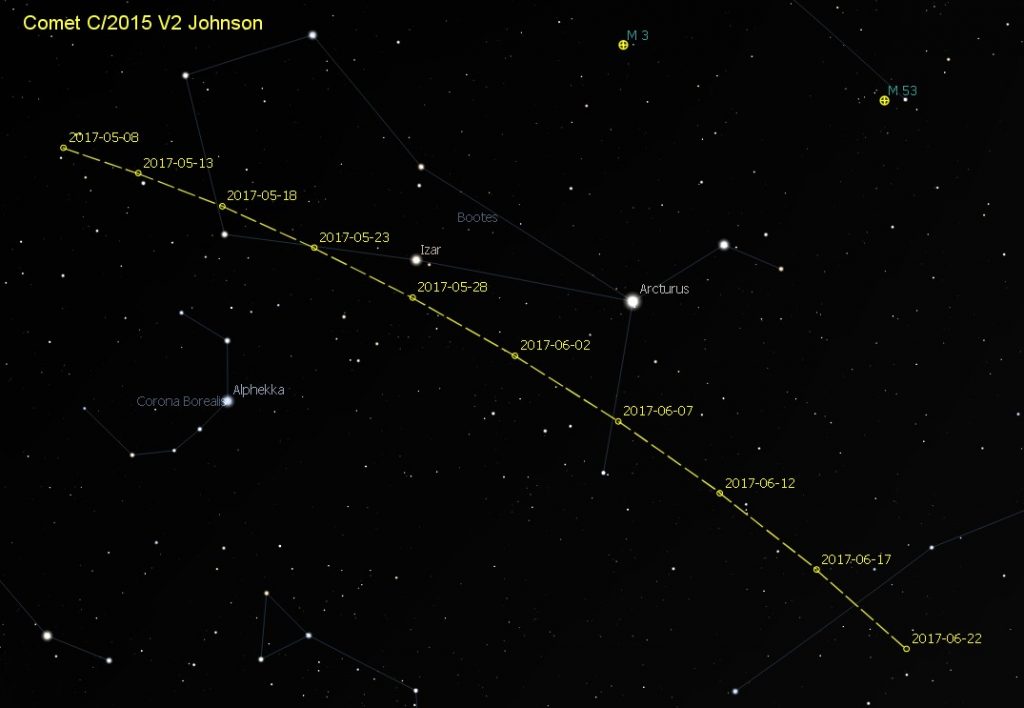June is the gateway to the summer months whereupon Astronomy Societies appear to commence hibernation for three months awaiting the retreat of the Sun. But there is no reason for observing to stop; yes we’ve temporary lost ‘darkness’ and at best see just astronomical twilight but there is much more out there to enjoy.
Firstly, you may be starting late in the evening/approaching midnight but it’s t-shirt weather even in the early hours.
Secondly, the firmament above doesn’t stop to go on holiday. The spectacular solar eclipse will still occur in the US on 21st August. Cassini will continue her death defying orbits diving between Saturn and the rings towards the planned September vaporisation. The majority of planets and the Moon remain visible at one time or other this month and the brighter deep sky objects are easily found.
Thirdly, whilst on holiday, there will be new skies above you. Probably further south in latitude, you’ll see new constellations, darker skies and less light pollution. Take a camera or just enjoy the sights over an extra beer or two.
The month begins with Venus reaching its farthest west in its current orbit on 3rd June and so before dawn in the morning easterly skies, it is a bright beacon appearing through a telescope or good binoculars like the Moon at first quarter, 50% illuminated.
Saturn will reach opposition on 15th June and so the Earth sits neatly in between it and the Sun. This means it’ll be visible all night (short) and given a telescope, will show the rings and brightest moons. On a steady tripod/mount, capture 60 seconds of webcam footage of the planet and process the video through tools like Registax to remove some of the noise by automatically combining frames. This will bring out the fleeting detail you can see through the eyepiece but lose a split second later. Try this on Jupiter or Saturn for good effect.
Saturn won’t be affected by the Moon’s waxing during the early part of June on its journey to be full on 9th June. The crescent will give a good target after spending time on these bright planets as night vision will be lost for a good while. If the webcam thing is working for you, point your scope at the lunar terminator and capture a good 30 second stream for later stacking to pull out stunning detail across crater floors. This is a good time of year to try out these techniques as you can see what you are doing. Less fumbling around means more comfort and less effort to capture. Never try to learn something you in a pitch black field at minus two degrees centigrade!
The Sun will reach its farthest north in the sky on 21st June signifying the Summer Solstice and a good reason to meet like minded people around the stones at Avebury or Stonehenge.
For those interested in deep sky objects, the week approaching 24th June and the new Moon will be the trigger to put extra coal on the barbecue and enjoy a burger in the early hours whilst out observing.
For those at the last observing session, comet C/2015 V2 Johnson is still with us tracking to the south in Boötes a little way from Arcturus. This is perhaps the last good comet of the year so have a look and cross your fingers for some new discoveries.

Uranus and Neptune are in the morning sky, the former close to Venus currently. Mars in still in the early evening sky close to the Sun so out of reach for decent observations. Mercury approaches the Sun from the opposite side and will pass between Earth and the Sun on 21st June.
If you are a betting astronomer, then why not have a punt on the June Boötids. Typical hourly rates of 1 or 2 but in 1998 it hit 100. The peak is on 27th June.
